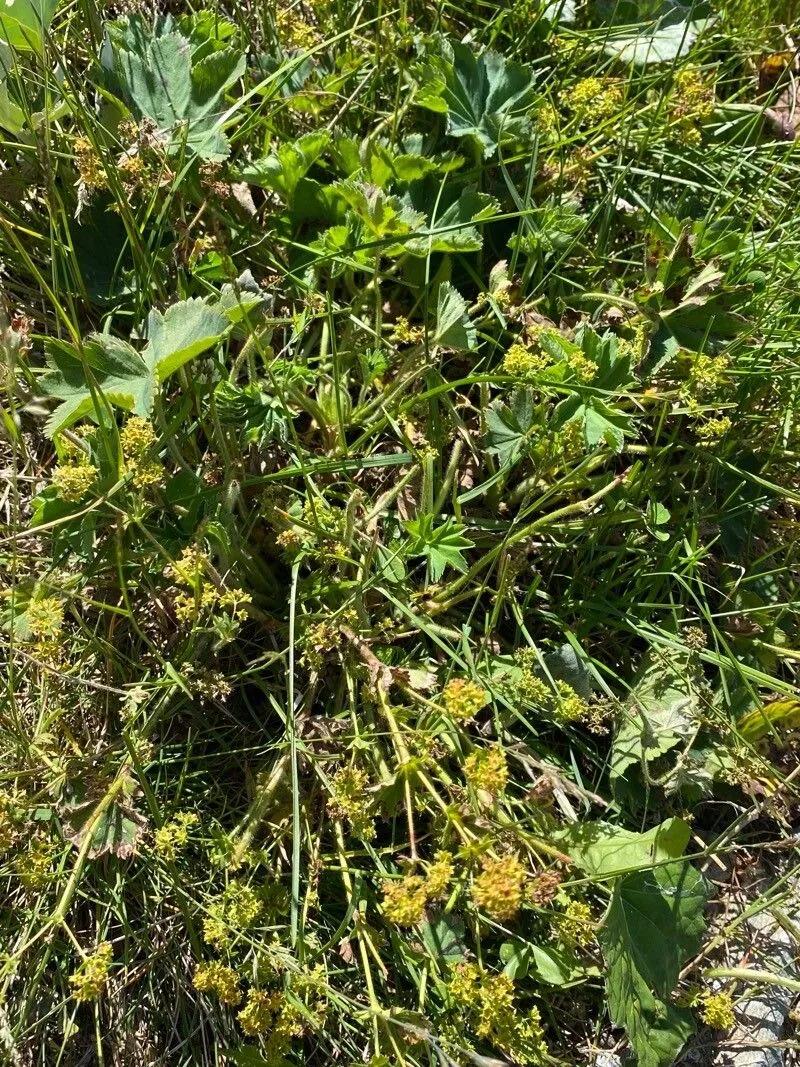
Author: Opiz
Bibliography: B.V.von Berchtold & P.M.Opiz, Oekon.-Techn. Fl. Böhm. 2(1): 13 (1838)
Year: 1838
Status: accepted
Rank: species
Genus: Alchemilla
Vegetable: False
Observations: Europe to Siberia and C. China
The Hairy Lady’s Mantle, scientifically known as Alchemilla monticola, is an intriguing plant belonging to the Rosaceae family. First described by the botanist Opiz, this species has garnered attention since its mention in B.V. von Berchtold & P.M. Opiz’s work, “Oekonomisch-Technische Flora Böhmens,” published in 1838.
This perennial herb is noted for its delicate yet distinctive appearance, featuring soft, hairy leaves that give the plant its common name. Each leaf is palmate with serrated edges and the unique ability to catch dew droplets, creating a visually captivating spectacle in the early morning light.
Alchemilla monticola thrives in a wide range of environments, from the temperate regions of Europe to the expansive landscapes of Siberia and central China. Its robust nature allows it to adapt to different soil types and climatic conditions, making it a resilient addition to various flora communities.
The Hairy Lady’s Mantle contributes significantly to its ecosystem by providing ground cover that helps reduce soil erosion. Its flowers, typically greenish-yellow, bloom from late spring to early autumn and are known for attracting a plethora of pollinators, including bees and butterflies.
This plant also holds value in traditional herbal medicine and gardening. Historically, it has been used to treat a variety of ailments due to its purported astringent and anti-inflammatory properties. Gardeners appreciate it for its low-maintenance requirements and its ability to add texture and greenery to garden beds and borders.
In summary, Alchemilla monticola is not only a botanical marvel due to its widespread geographical distribution and adaptability but also a cherished plant in horticulture and traditional medicine. Its enduring presence across continents underscores its versatile and enduring nature within the diverse plant kingdom.
Deu: bergwiesen-frauenmantel
Dan: grå løvefod
Eng: hairy lady’s mantle, velvet lady’s mantle, velvet lady’s-mantle, mountain lady’s mantle
Fra: alchémille des montagnes, alchemille velue
Nob: beitemarikåpe
Nno: beitemarikåpe
Nld: bergvrouwenmantel
Swe: betesdaggkåpa, laidunpoimulehti
Fin: laidunpoimulehti
Sme: niitovuolpu
En: Hairy lady’s mantle, Velvet Lady’s-mantle, Velvet lady’s mantle, Mountain lady’s mantle, Dwarf Lady’s-mantle, Hairy Lady’s-mantle
Bg: Планинско шапиче
Cs: Kontryhel pastvinný
Da: Grå løvefod
Nl: Bergvrouwenmantel, Bergwrouwenmantel
Et: Karjus-kortsleht
Fi: Laidunpoimulehti
Fr: Alchémille des montagnes, Alchemille velue
De: Berg-Frauenmantel, Bergwiesen-Frauenmantel
Hu: Közönséges palástfű
It: Ventaglina
Se: Niitovuolpu
Nb: Beitemarikåpe
Nn: Beitemarikåpe
Pl: Przywrotnik pasterski
Sv: Betesdaggkåpa, Laidunpoimulehti
Uk: Приворотень гірський
Taken May 27, 2020 by Mo Crocker (cc-by-sa)
Taken May 18, 2019 by Kacirekova Barbora (cc-by-sa)
Taken Jun 20, 2021 by Marco Grünwald (cc-by-sa)
Taken Jul 25, 2021 by sanne oldenburg (cc-by-sa)
Taken May 29, 2018 by abdullah pllana (cc-by-sa)
Taken Jul 12, 2021 by David Willems (cc-by-sa)
Taken Sep 20, 2022 by Schubidu Kahlibu (cc-by-sa)
Taken May 31, 2019 by Todd (cc-by-sa)
Taken Apr 28, 2021 by Joanna Wrońska (cc-by-sa)
Taken May 24, 2020 by Laurent Silvin (cc-by-sa)
Taken Jul 19, 2022 by Jacques Zuber (cc-by-sa)
Taken Jul 19, 2022 by Jacques Zuber (cc-by-sa)
Taken Jul 18, 2022 by Jacques Zuber (cc-by-sa)
Taken Jun 12, 2022 by Frank Sundermeyer (cc-by-sa)
Taken Jan 1, 1900 by EOL − Encyclopedia of Life (cc-by-nc)
Taken Aug 15, 2021 by Pietro Brignoli (cc-by-sa)
Taken Aug 15, 2010 by Photoflora – Benoit BOCK (©)
Taken Jul 15, 2011 by Photoflora – Benoit BOCK (©)
Taken Jan 1, 1800 by Tela Botanica − Thierry Pernot (cc-by-sa)
Taken Jan 1, 1800 by Tela Botanica − Thierry Pernot (cc-by-sa)
Taken May 29, 2020 by Bianca Legault (cc-by-sa)
Taken Jun 4, 2022 by Lizzi Loris (cc-by-sa)
Taken Jul 15, 2011 by Photoflora – Benoit BOCK (©)
Taken Jul 15, 2011 by Photoflora – Benoit BOCK (©)
Taken Jul 15, 2011 by Photoflora – Benoit BOCK (©)
Taken Jul 15, 2011 by Photoflora – Benoit BOCK (©)
Taken Jul 15, 2011 by Photoflora – Benoit BOCK (©)
© copyright of the Board of Trustees of the Royal Botanic Gardens, Kew.
© copyright of the Board of Trustees of the Royal Botanic Gardens, Kew.
© copyright of the Board of Trustees of the Royal Botanic Gardens, Kew.
Growth habit: Forb/herb
Ph maximum: 6.5
Ph minimum: 5.5
Light: 6
Atmospheric humidity: 7
Soil nutriments: 5
Family: Myrtaceae Author: (F.Muell.) K.D.Hill & L.A.S.Johnson Bibliography: Telopea 6: 402 (1995) Year: 1995 Status:…
Family: Rubiaceae Author: Pierre ex A.Froehner Bibliography: Notizbl. Bot. Gart. Berlin-Dahlem 1: 237 (1897) Year:…
Family: Sapindaceae Author: Koidz. Bibliography: J. Coll. Sci. Imp. Univ. Tokyo 32(1): 38 (1911) Year:…
Family: Asteraceae Author: A.Gray Bibliography: Pacif. Railr. Rep.: 107 (1857) Year: 1857 Status: accepted Rank:…
Family: Fabaceae Author: Medik. Bibliography: Vorles. Churpfälz. Phys.-Ökon. Ges. 2: 398 (1787) Year: 1787 Status:…
Family: Aspleniaceae Author: (Cav.) Alston Bibliography: Bull. Misc. Inform. Kew 1932: 309 (1932) Year: 1932…